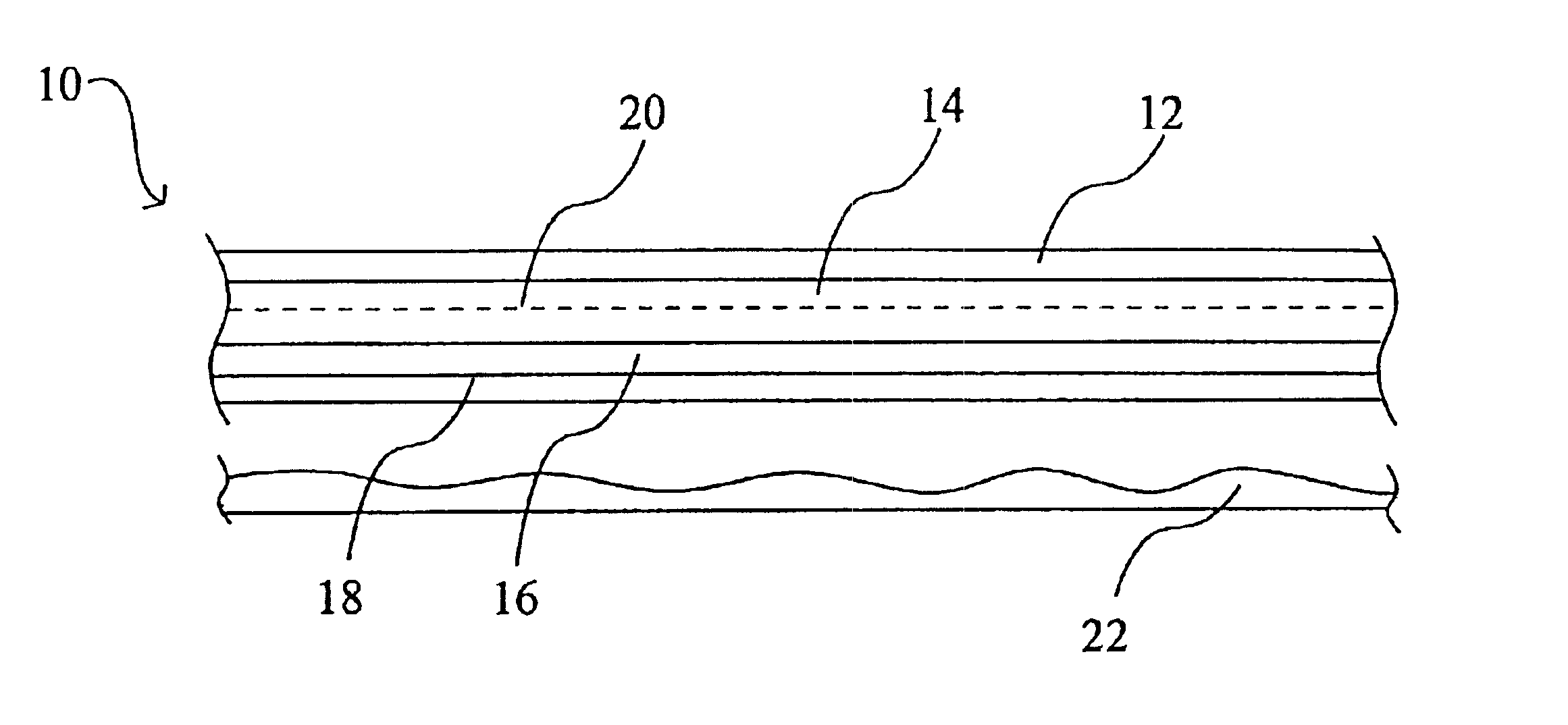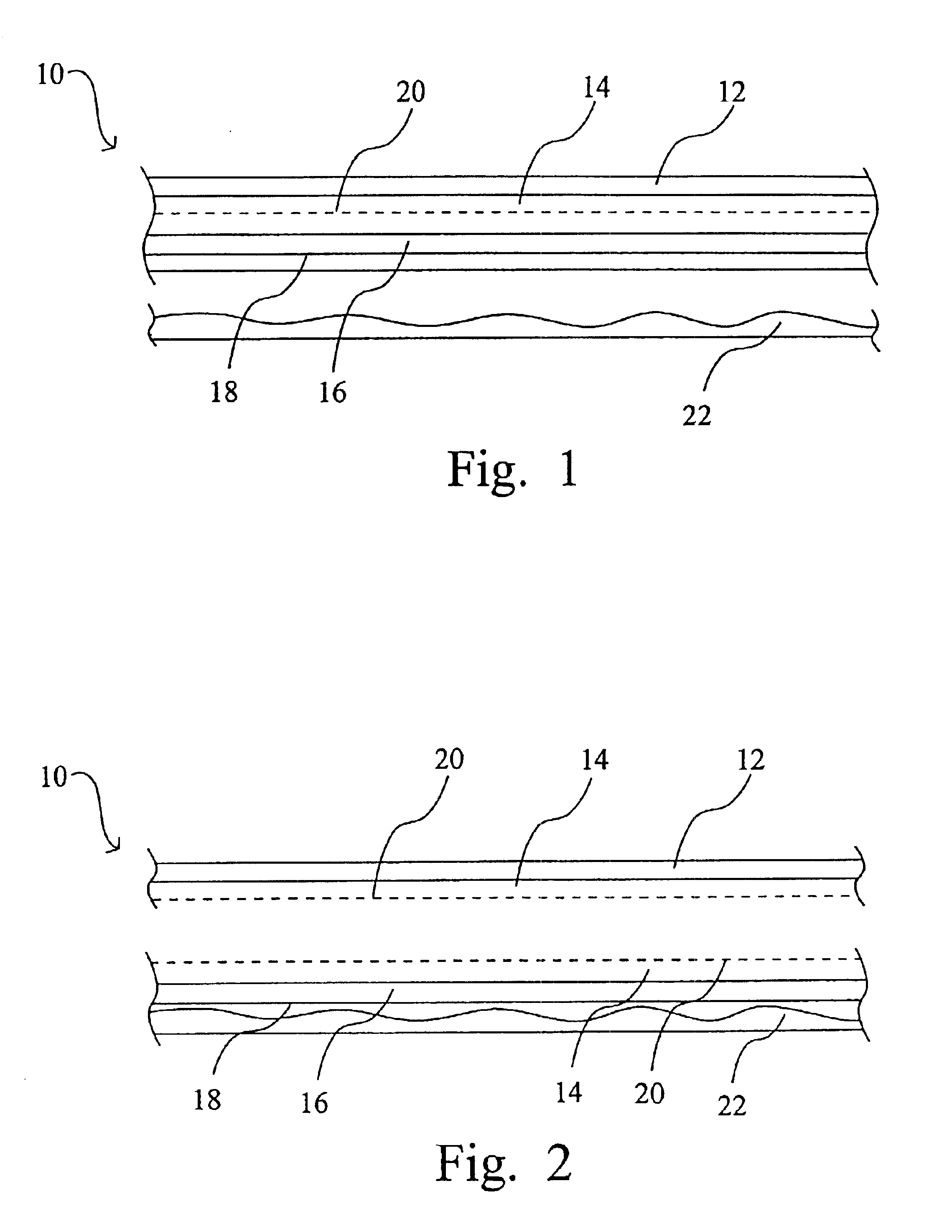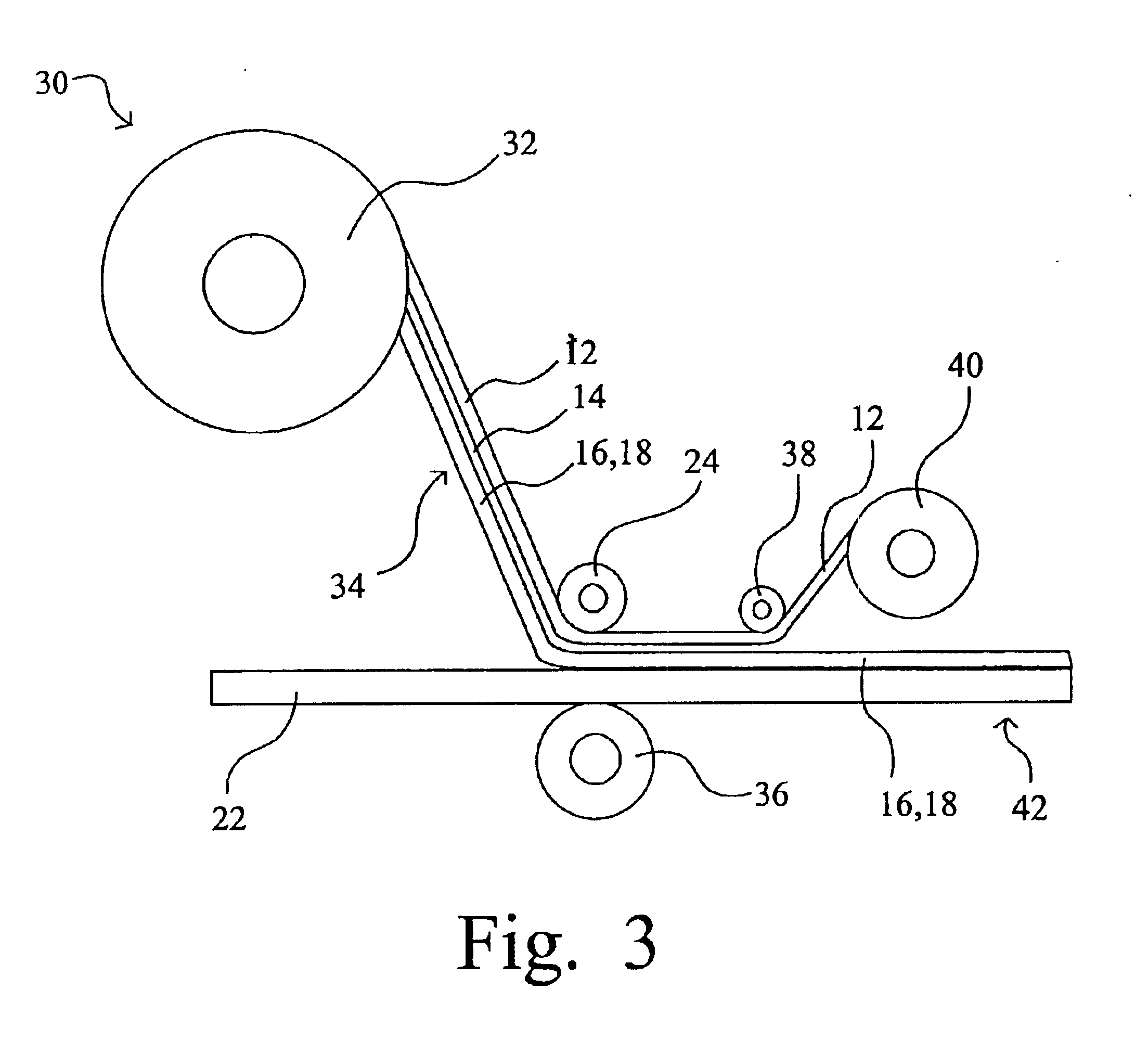Images printed on porous media and coated with a thermal transfer overcoat
a technology of thermal transfer and image, applied in the direction of thermography, synthetic resin layered products, instruments, etc., can solve the problems of dye-based inks that are not waterproof, dye-based inks that are usually not waterproof, and are more affected by ultraviolet light, color changing over time, and fading
- Summary
- Abstract
- Description
- Claims
- Application Information
AI Technical Summary
Benefits of technology
Problems solved by technology
Method used
Image
Examples
Embodiment Construction
Before the present invention is disclosed and described, it is to be understood that this invention is not limited to the particular process steps and materials disclosed herein because such process steps and materials may vary somewhat. It is also to be understood that the terminology used herein is used for the purpose of describing particular embodiments only. The terms are not intended to be limiting because the scope of the present invention is intended to be limited only by the appended claims and equivalents thereof.
It must be noted that, as used in this specification and the appended claims, the singular forms “a,”“an,” and “the” include plural referents unless the content clearly dictates otherwise.
“Tags” refers to pieces of overcoating material that extend over the edge of a media sheet after undergoing an overcoating process. In the prior art, tags have often been cut off using a separate cutting step.
“Tangent d” or “the loss tangent” is a convenient measurement of viscoe...
PUM
| Property | Measurement | Unit |
|---|---|---|
| Temperature | aaaaa | aaaaa |
| Temperature | aaaaa | aaaaa |
| Temperature | aaaaa | aaaaa |
Abstract
Description
Claims
Application Information
 Login to View More
Login to View More - R&D
- Intellectual Property
- Life Sciences
- Materials
- Tech Scout
- Unparalleled Data Quality
- Higher Quality Content
- 60% Fewer Hallucinations
Browse by: Latest US Patents, China's latest patents, Technical Efficacy Thesaurus, Application Domain, Technology Topic, Popular Technical Reports.
© 2025 PatSnap. All rights reserved.Legal|Privacy policy|Modern Slavery Act Transparency Statement|Sitemap|About US| Contact US: help@patsnap.com



